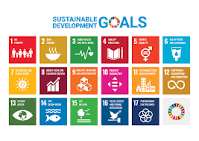DOES SUFFERING MAKE US MORE TOLERANT—OR JUST NUMB?
Suffering is a universal human
experience that has shaped cultures, philosophies, and individual lives
throughout history. Many traditions teach that enduring hardship can build
character, empathy, and tolerance, suggesting that those who have suffered may
better understand and accept the struggles of others. Yet, the relationship
between suffering and tolerance is complex and sometimes contradictory. Does
suffering truly make us more compassionate and open-minded, or can it simply
lead to emotional numbness and detachment? Exploring this question requires
delving into the psychological, social, and cultural dimensions of pain and
endurance.
On one hand, suffering can indeed
foster greater tolerance. Experiencing pain, loss, or injustice firsthand often
deepens a person’s capacity to empathize with others who face similar
challenges. When individuals endure hardship, they may develop a heightened
sensitivity to suffering around them and a desire to alleviate it. This can
inspire acts of kindness, solidarity, and activism. In many communities, shared
suffering has forged bonds and resilience, helping people overcome divisions
based on ethnicity, class, or ideology. Philosophically, suffering is sometimes
seen as a crucible that refines moral character and broadens one’s perspective,
encouraging humility and patience.
However, suffering does not
automatically lead to increased tolerance. For some, repeated or intense pain
may cause emotional exhaustion or desensitization. Rather than opening hearts,
suffering can harden attitudes or provoke withdrawal. When overwhelmed by
hardship, people might protect themselves by shutting down feelings or becoming
indifferent to others’ problems. This emotional numbness can manifest as apathy
or even bitterness, undermining the possibility of connection and
understanding. Psychological studies have shown that trauma, if unresolved, can
impair empathy and increase distrust or hostility.
Cultural narratives also influence how
suffering shapes tolerance. In some societies, enduring suffering silently is
valorized, emphasizing stoicism over emotional expression. While this can
cultivate discipline and endurance, it may also discourage individuals from
processing pain healthily or seeking support, leading to isolation. Moreover,
when suffering is seen as a personal burden or punishment, rather than a
collective issue, it may prevent people from acknowledging systemic causes of
hardship or advocating for change. This can limit the potential for collective
tolerance and social justice.
In the Nepali context, where many
communities face economic hardships, natural disasters, and social
inequalities, the question of suffering and tolerance is particularly poignant.
On one hand, Nepalis are often praised for their resilience and ability to find
joy amid difficulties. Shared experiences of adversity, such as recovering from
earthquakes or navigating political instability, have fostered communal support
and solidarity. Yet, there are also signs of emotional fatigue and social
fragmentation, where chronic struggles lead some to disengage or harbor
resentment. Understanding this duality is crucial for addressing social
cohesion and mental well-being.
Ultimately, whether suffering leads to
tolerance or numbness depends on a range of factors: the nature and duration of
suffering, the availability of social support, cultural attitudes toward pain,
and individual coping mechanisms. Healing and reflection can transform
suffering into empathy, while neglect or repression can foster numbness.
Societies that provide spaces for dialogue, mental health care, and collective
healing are better positioned to convert hardship into compassion.
In conclusion, suffering holds the
potential both to deepen tolerance and to dull sensitivity. It is not an
automatic process but one shaped by individual experiences and social contexts.
Recognizing this complexity allows us to move beyond simplistic ideas about
pain and resilience, and instead nurture environments where suffering can be
acknowledged, processed, and transformed. By doing so, we can hope to foster
not numbness but genuine empathy and connection, both within Nepal and beyond.

Comments
Post a Comment